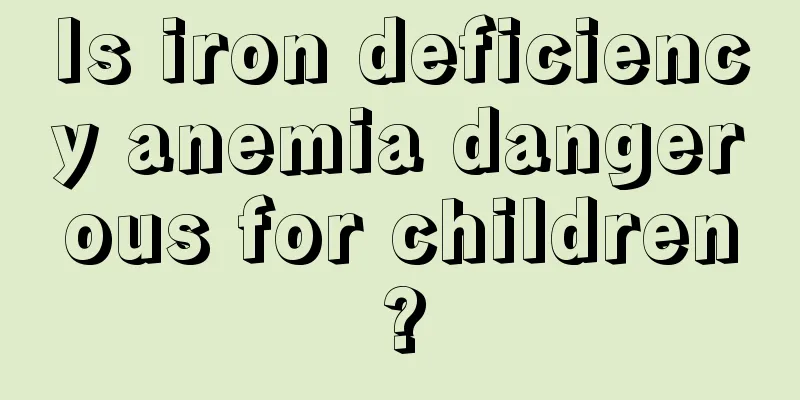Causes and treatment of lymphadenitis in children

|
It is really a headache for young parents when their baby is sick. In spring and autumn, babies are prone to diarrhea. In winter, the weather is cold and babies are prone to colds and fevers, which can also cause tonsillitis. This often results in lymphadenitis. So, what exactly is lymphadenitis, how does lymphadenitis occur in children, and how can it be prevented and treated? Below we will provide detailed answers to each question. Clear up some doubts about pediatric lymphadenitis. Lymphadenitis is a nonspecific inflammation caused by acute or chronic inflammation of the drainage area of the lymph nodes. For example, infection of the upper limbs, breasts, chest wall, back and abdominal wall above the navel causes axillary lymphadenitis; infection of the lower limbs, abdominal wall below the navel, perineum and buttocks can cause inguinal lymphadenitis; infection of the head, face, mouth, neck and shoulders causes submandibular and cervical lymphadenitis. Depending on the onset and duration of the disease, lymphadenitis can be divided into acute and chronic lymphadenitis. Acute lymphadenitis is characterized by acute inflammation such as local redness, swelling, heat, and pain. It has an acute onset and is often accompanied by fever. The swollen lymph nodes are soft, tender, and have a smooth surface without adhesions. The swelling stops when it reaches a certain extent. The redness and swelling can subside after timely anti-infection treatment. When the condition worsens, it may also develop into an abscess, accompanied by systemic infection symptoms. Chronic lymphadenitis has a long course, mild symptoms, hard and movable lymph nodes, and no obvious tenderness. Eventually the lymph nodes may shrink or disappear. Lymphadenitis is common in children and is characterized by unexplained paroxysmal abdominal pain around the navel and fever. The pressure from the swollen lymph nodes causes pain. Lymph node enlargement caused by lymphadenitis is very common and can be seen in a variety of diseases, both benign and malignant. Therefore, it is very important to pay attention to the cause of lymph node enlargement, seek medical treatment in time, and confirm the diagnosis to avoid misdiagnosis or missed diagnosis. The main points for diagnosing lymphadenitis are: 1. There may be respiratory tract infection, oral inflammation, and furunculosis. Primary infection foci such as skin lesion infection. 2. Local lymph nodes are swollen, painful or red, and feel fluctuating when touched, often accompanied by fever, loss of appetite, etc. 3. Perform lymph node biopsy if necessary to exclude malignant tumor infiltration. The main treatments for lymphadenitis in children include: 1. Systemic treatment. 1. Acute lymphadenitis should first control inflammation to prevent its spread, and use effective and sufficient antibiotics such as penicillin, streptomycin or other broad-spectrum antibiotics. Medication can also be selected based on the drug sensitivity test of the specimen. 2. Supportive therapy: supplement necessary vitamins and fluids, and regulate electrolyte balance. 2. Local treatment. 1. Apply anti-inflammatory powder externally to reduce inflammation and relieve pain. 2. Application 3. Blockade therapy: When the abscess has not yet formed, penicillin and procaine solution can be used for peri-lymph node blockade (a skin test is required first). The prevention of lymphadenitis in children mainly involves physical exercise and enhancing immunity. For those with primary infection foci, such as skin and mucous membrane wounds, tonsillitis infections, etc., the primary foci should be treated in a timely manner. The above mainly introduces the causes of pediatric lymphadenitis, diagnostic points, treatment methods and how to prevent pediatric lymphadenitis. I hope that through the introduction of this article, young parents can learn some common medical knowledge and take good care of their babies. When the baby becomes ill, we can diagnose the condition in time, make correct treatment and prevent the disease from being delayed. |
<<: Causes and treatment of acute gastroenteritis in children
>>: Symptoms of a child's weak constitution
Recommend
The importance of early childhood education
From the moment the baby is born, every parent ho...
How to judge whether the baby's fontanelle is cold
Many parents have questions about how to determin...
Is it normal for a one-year-old baby to snore when sleeping?
During the growth period of one-year-old babies, ...
Treatment options for sinusitis in children
I believe many people have heard of the disease c...
What to do if your newborn hiccups
For many new parents, the arrival of a baby often...
What should I do if my baby has a sore throat and repeated high fever?
There are many parents around us who spoil their ...
What should I do if my child has poor resistance?
Children have weaker health and are always catchi...
What should I do if my child keeps crying due to fever?
Having a baby at home fills many families with jo...
How to build muscle for kids
Perhaps every boy wants to have an impressive fig...
How to solve the problem of baby's fever caused by stomachache
Parents with children at home usually have some m...
Who determines a child's IQ?
Parents all have high expectations for their chil...
What should I do if my baby has a fever of 39 degrees and his hands and feet are cold?
The physical health of the baby is an issue that ...
Is bathing every day good for your baby?
Although the one-child policy has been opened, th...
Why does the child sweat a lot on his head?
Sweating is a normal and common phenomenon in our...
How to quickly whiten your child
Children are very active and always like to run a...









